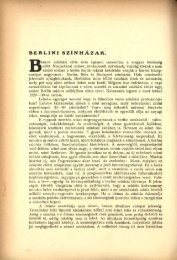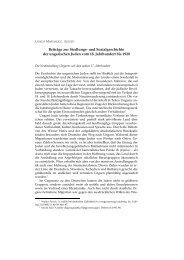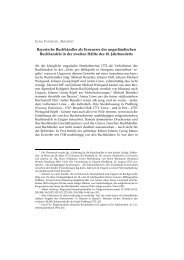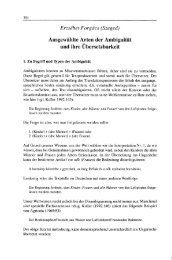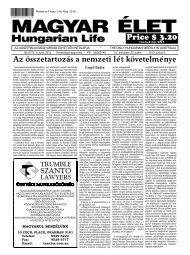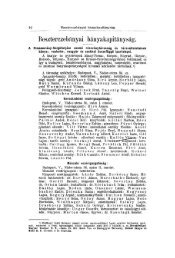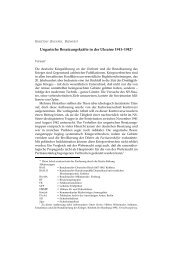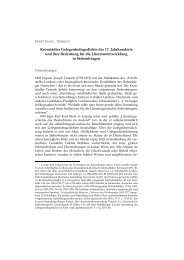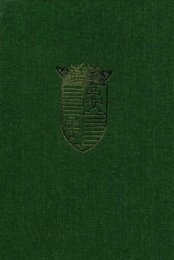Journal of Eurasian Studies - EPA
Journal of Eurasian Studies - EPA
Journal of Eurasian Studies - EPA
You also want an ePaper? Increase the reach of your titles
YUMPU automatically turns print PDFs into web optimized ePapers that Google loves.
April‐June 2010 JOURNAL OF EURASIAN STUDIES Volume II., Issue 2.<br />
_____________________________________________________________________________________<br />
The Székely heritage<br />
The Székely, Gábor Bálint de Szentkatolnai, was born on March 13, 1844, to Endre Bálint and Ágnes<br />
Illyés, in the village <strong>of</strong> Szentkatolna, in the County <strong>of</strong> Háromszék, which was one <strong>of</strong> the Székely counties<br />
<strong>of</strong> the Hungarian Kingdom. Szentkatolna was a typical Székely village in the so‐called Székelyland in the<br />
southern part <strong>of</strong> Transylvania. The Székely were border‐guards in the old Hungarian Kingdom,<br />
protecting the south‐eastern borders, i.e. the mountain range <strong>of</strong> the Eastern Carpathians. Because <strong>of</strong> this,<br />
most <strong>of</strong> the Székely were granted nobility by the Hungarians kings or rulers <strong>of</strong> the semi‐independent<br />
Transylvanian principality that existed in the seventeenth century, during the Ottoman occupation <strong>of</strong><br />
Hungary. 5 The ancestors <strong>of</strong> Gábor Bálint had been granted nobility as well. They received nobility from<br />
the Habsburg King <strong>of</strong> Hungary, Rudolf (1572‐1608) and it was reinforced by Prince Gábor Rákóczy I <strong>of</strong><br />
Transylvania (1630‐1648). The Bálint family originally lived in the neighbouring village <strong>of</strong> Lemhény. At<br />
the beginning <strong>of</strong> the seventeenth century, one <strong>of</strong> their branches moved to Szentkatolna. Hence, instead <strong>of</strong><br />
referring to Lemhény in their noble title, the branch, to which Gábor Bálint belonged, used the Hungarian<br />
style notation Szentkatolnai meaning ‘from Szentkatolna’ or the French style notation with de, i.e. ‘De<br />
Szentkatolna’ for international use expressing nobility. 6 (…)<br />
‘The Ugor‐Turkish War’<br />
Although the Bálint family was <strong>of</strong> noble origin, this did not guarantee a wealthy life. Gábor grew up<br />
under poor circumstances. After his elementary school years at several schools in his native Székelyland<br />
and Transylvania, he took his final examinations at the Catholic Lyceum in Nagyvárad. 7 When he<br />
graduated from the Catholic Lyceum, he already knew a dozen European and Oriental languages,<br />
including the classical languages. Gábor had a special talent for mastering new languages quickly and, in<br />
the years to come, he would acquire some thirty languages, including Esperanto. After his final<br />
examinations, Gábor continued his studies at the Faculty <strong>of</strong> Law at the University <strong>of</strong> Vienna. The young<br />
student also took classes in Oriental <strong>Studies</strong> and Languages. Because Gábor ran out <strong>of</strong> money, he decided<br />
to finish his law and linguistic studies at the University <strong>of</strong> Pest. The young Székely graduated from the<br />
Hungarian university in 1871. Shortly afterwards, he became acquainted with two other scholars, who<br />
were active in Budapest, namely János Fogarasi (1801‐1878) and Ármin Vámbéry (1832‐1913). These two<br />
men had an important influence on his future career.<br />
After the defeat <strong>of</strong> the Hungarian honvéd in 1849, the Hungarian Academy <strong>of</strong> Sciences, established by<br />
the liberal Count István Széchenyi, became Germanized in the anti‐Hungarian era under the Austrian<br />
governor Alexander Bach. In the Bach era that lasted until the Ausgleich <strong>of</strong> 1867, a scholar, loyal to the<br />
Austrian cause, Paul Hunsdorfer, a lawyer belonging to the German minority <strong>of</strong> Upper‐Hungary and a<br />
representative <strong>of</strong> the Peace Party in the Hungarian Parliament, which wanted to compromise with the<br />
5 See Köpeczi (1994, 301‐355).<br />
6 See Palmay (2000, 33).<br />
7 Today’s Oradea in Romania.<br />
_____________________________________________________________________________________<br />
© Copyright Mikes International 2001‐2010 86


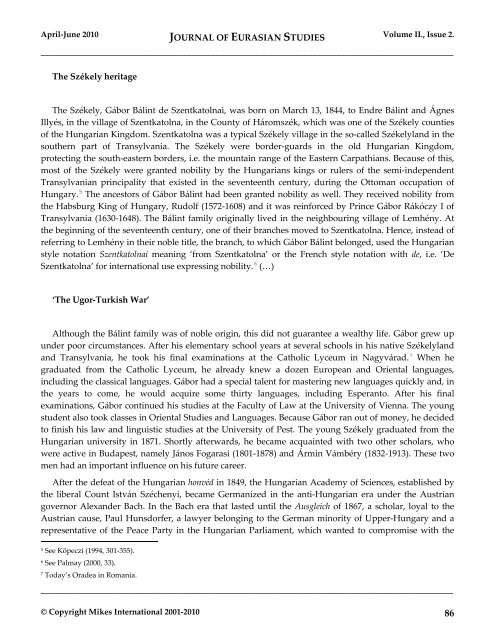
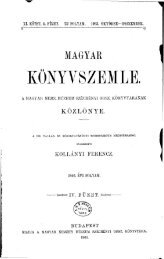
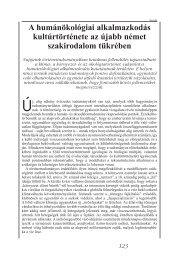
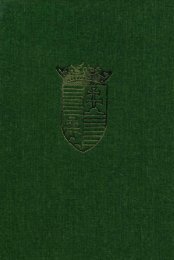
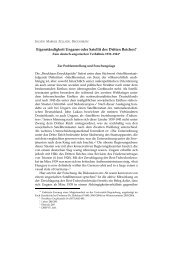
![Letöltés egy fájlban [36.8 MB - PDF] - EPA](https://img.yumpu.com/23369116/1/172x260/letoltes-egy-fajlban-368-mb-pdf-epa.jpg?quality=85)
